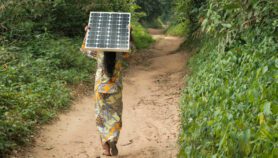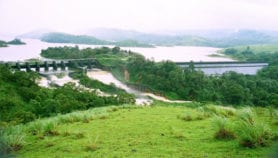Send to a friend
The details you provide on this page will not be used to send unsolicited email, and will not be sold to a 3rd party. See privacy policy.
[SANTIAGO] Deforestation may lead to electricity shortages in tropical rainforest regions that rely heavily on hydropower, as fewer trees mean less rainfall for hydropower generation, a study shows.
For example, if deforestation continues, one of the world's largest dam projects in Brazil will deliver around a third less energy than is currently estimated, according to the research, published in Proceedings of the National Academy of Sciences (PNAS) last week (13 May).
SPEED READ
- Deforestation cuts rainfall and the amount of water available for hydropower
- Brazil's biggest dam project could deliver around a third less energy because of deforestation
- Tropical nations should consider the effects of deforestation on their hydropower plans
Researchers had presumed that cutting down trees near dams increases the flow of water and hence energy production. This is because crops and pastures that replace trees take less water from the ground and lose less moisture by evaporation.
But trees also release water vapour into the atmosphere, which turns into rain and feeds hydroelectric power stations, and this new research suggests that wider deforestation can reduce overall rainfall and therefore energy production. This should be taken into account when planning hydropower developments in tropical regions, say the authors.
Lead author Claudia Stickler and colleagues looked at the link between trees and power generation at Brazil's Belo Monte hydropower complex, which is being built on the Xingu River, a tributary of the Amazon. It is set to be the third largest hydropower project in the world when it is completed in 2015 and is expected to supply 40 per cent of Brazil's energy needs by 2020.
They found that because of current levels of deforestation in the Amazon region, rainfall is already six to seven per cent lower than it would be with full forest cover.
"If forest loss doubles by 2050 — that is, if 40 per cent of the Amazon or Xingu river watershed has been deforested by that date — rainfall loss will reduce Belo Monte's energy production by one third over that projected," Stickler, a researcher at the Amazon Environmental Research Institute's International Program in the United States, tells SciDev.Net.
She says that such a degree of deforestation is plausible based on government infrastructure plans in the region.
The researchers used computer models simulating land cover, climate and the river system to examine how different deforestation scenarios would affect the regional climate and, ultimately, water flow into the Belo Monte complex. They then calculated the effect on the production of energy.
In accordance with previous studies, the researchers found that cutting down trees within the Xingu river basin increased water discharge and energy generation. But this water gain was heavily outweighed by the reduced flow of water caused by less rainfall across the entire Amazon basin.
"If deforestation continues to 40 per cent of the total Amazon River basin, even forest conservation or reforestation in the Xingu River basin will not be enough to compensate for the loss," Stickler says.
The study says the amount of rainfall in the Amazon, in Central Africa and in South-East Asia depends on regional forest cover, and that deforestation could affect the hydropower expansion plans of countries in these regions.
But Wilson Cabral de Souza Junior, an environmental economist at the Technological Institute of Aeronautics, Brazil, tells SciDev.Net that other regions should use the results with care, as they are based on specific data from the Amazon and Xingu basins.
References
PNAS doi: 10.1073/pnas.1215331110 (2013)













